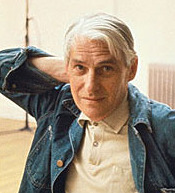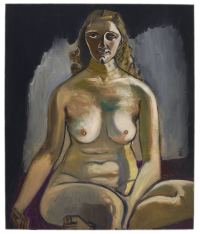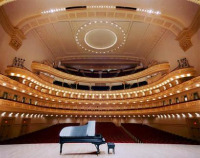Talk about stirring the pot. Universal museums and contemporary museums are often rivals, and this month, in The ArtNewspaper, Madeleine Grynsztejn — director of Chicago’s Museum of Contemporary Art — comes up with an unforgettable quote on the subject.
In an article about the Art Institute of Chicago’s new Modern Wing, which will soon house its contemporary collection and provide new space for photography, design and media works, Grynsztejn manages to imply the opposite even as she says the two museums are complemetary rather than competitive:
The MCA creates art history and the Art Institute summarizes it.
Wonder what Jim Cuno, director of the Art Institute, thinks about that!

 Aside from being a great statesman and a writer and a painter, Winston Churchill, whom I mentioned in my last post, was a boozer. So were dozens of famous writers and artists. Among them are Edgar Allan Poe, Ernest Hemingway, Jackson Pollock, Willem de Kooning (right), Mark Rothko, Robert Rauschenberg, Francis Bacon.
Aside from being a great statesman and a writer and a painter, Winston Churchill, whom I mentioned in my last post, was a boozer. So were dozens of famous writers and artists. Among them are Edgar Allan Poe, Ernest Hemingway, Jackson Pollock, Willem de Kooning (right), Mark Rothko, Robert Rauschenberg, Francis Bacon. 



